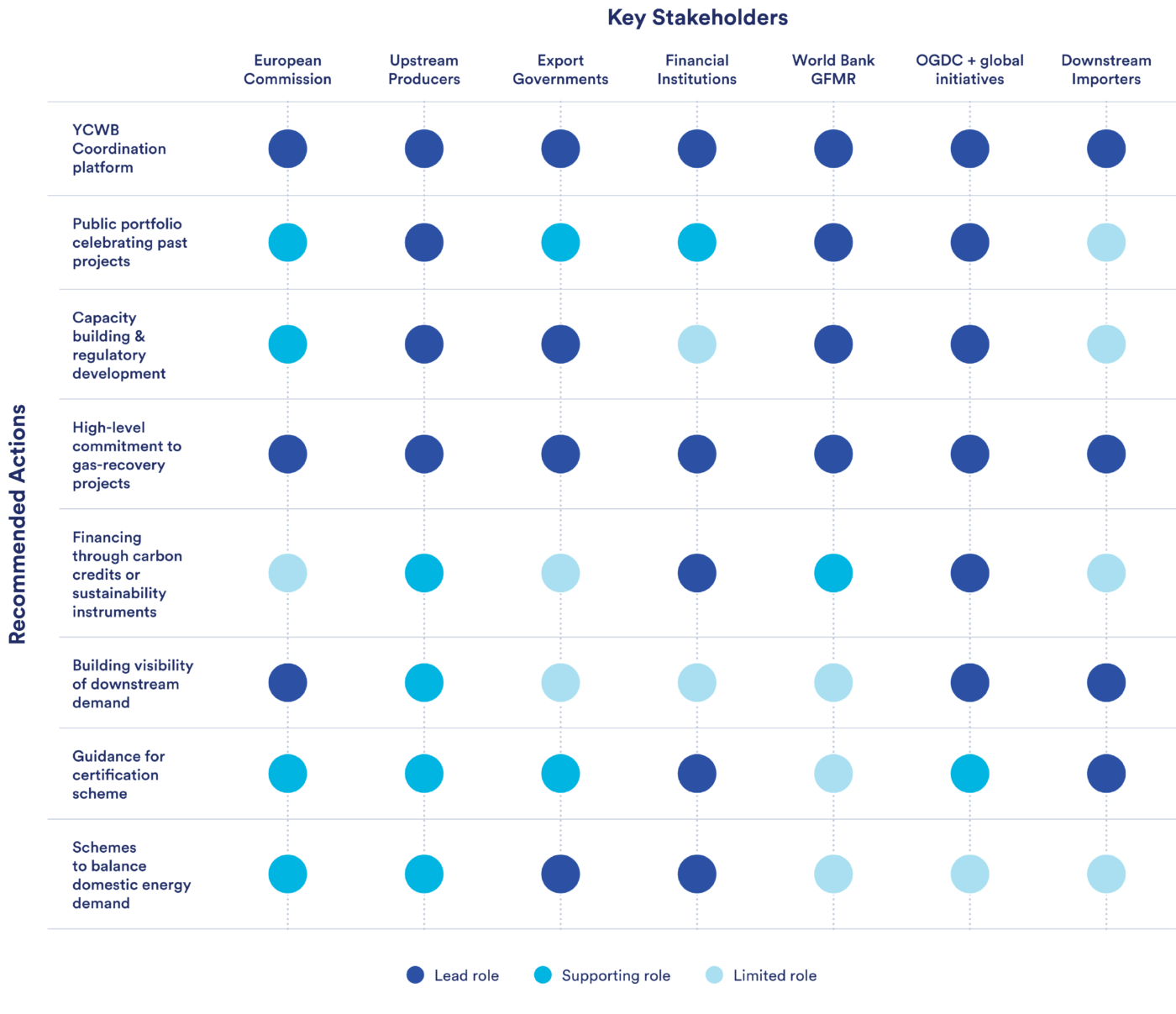
Breaking the deadlock: Turning dangerous emissions into climate action
This article was originally published in Euractiv.
Progress on climate change is often stalled by a classic collective action problem: while the impacts of climate change affect everyone, the immediate costs are localized, making it tempting for companies and countries to prioritize vested short-term gains over collective long-term impacts.
Without sufficient coordination and cooperation, stakeholders often fail to realize that working together could leave them better off than working alone. This phenomenon broadly applies to building momentum for climate action, but is also evident in specific solutions, such as addressing methane emissions.
The oil and gas sector must move past roadblocks
Methane is a potent greenhouse gas that traps 80 times more heat than CO2 over 20 years, and is responsible for nearly half of our net warming to date. When released it accelerates global warming, but when harnessed this gas can be sold to generate power and heat homes.
Yet despite the clear economic, climate, and energy benefits, the oil and gas sector remains one of the world’s largest methane emitters, largely due to a collective action problem. Capturing and leveraging these emissions requires companies, financers, and countries to cooperate. Often, they must pool resources, share infrastructure and make short-term investments.
For example, operators extracting, processing and selling gas may need to provide oil operators in adjacent fields access to use their processing facilities. This may require infrastructure upgrades and complex contractual agreements. In other cases, pooling gas developed by different companies from nearby fields could make a potential project profitable, but a single hold-out could derail the effort.
Needless to say – this cooperation hasn’t materialized. Last year alone, the industry flared, vented, and leaked roughly $48 billion worth of methane into the air equivalent to more than 70% of the entire European Union’s gas consumption. These dangerous emissions are not only preventable, they’re also an opportunity to slow climate change and increase energy security. However, harnessing this opportunity requires a pivotal shift from individual gains to cooperative solutions.

A three-step plan: identify projects, materialize finance, and trace reductions
Solving any collective action problem requires coordination, alignment of incentives, and cooperation between stakeholders. Global leadership from methane champions, multilateral initiatives, and new regulations will all play an important role.
For example, at COP28 the European Union launched its “You Collect We Buy” initiative that sought to encourage the capture and marketing of gas, which was recently complemented by a “Methane Abatement Partnership Roadmap” at COP29. Initiatives such as these are important steps forward towards aligning stakeholder ambition, but will only deliver results if they address the underlying inertia blocking progress.
A new report by Clean Air Task Force illustrates how the EU could achieve this in practice by mobilizing the engagement and coordination necessary for stakeholders to collaborate on necessary actions. The solution hinges on developing a cooperation framework, whereby interested stakeholders can build momentum, trust, and incentives for gas-capture projects in three simple steps.
First, companies, countries, banks, and carbon credit markets need to build trust in gas-capture projects, and leverage data to tackle negative perceptions around financing gas-recovery projects in the upstream oil and gas sector, particularly in cash-constrained low and middle-income countries, where borrowing costs are significantly higher.
This means building investors’ confidence by highlighting successful projects, setting guardrails to prevent fossil-fuel lock-in, and improving flaring and methane emissions data with robust monitoring, reporting and verification (MRV) frameworks.
Second, companies should prioritize the development of gas-recovery projects. This requires creating internal incentives to encourage methane mitigation, such as raising emissions reduction targets to the prominence of performance and safety targets that facility managers are required to meet.
While companies inevitably juggle competing priorities and shareholder pressure to deliver the highest returns, reducing methane emissions must become a top priority, even when it doesn’t maximize profits. Other stakeholders – including governments – can reduce the net costs of these projects using positive and negative incentives, such as penalties and tax breaks.
Third, stakeholders must develop an approach to track captured gas volumes across the supply chain and bring them to market. The environmental attributes of abated and lower-intensity gas hold commercial value, but to unlock this value we need a market with buyers willing to pay for cleaner gas.
Building this market and tying specific volumes of gas together with their environmental attributes is key to driving proactive abatement before future regulatory obligations, such as the EU’s Methane Regulation, take effect.

What needs to happen next?
Around the world, societies confront shared and similar challenges: accelerating climate action, advancing social and economic equity, and guaranteeing fair access to reliable energy. While these issues may seem distinct, their solutions are deeply interconnected, grounded in a more sustainable and efficient use of our planet’s resources.
Achieving this equilibrium requires collective problem solving, and in the fossil fuel sector, where wasted resources also dangerously speed up the planet’s heating, the case for action couldn’t be clearer. Gas-capture projects present a tremendous near-term opportunity, and reducing these emissions can slow climate change, buy time for parallel decarbonization strategies, and increase global energy security.
Amid ongoing conflicts in the Middle East and Eastern Europe, concerns over the recent U.S. election, and uncertain energy markets, there has never been a more urgent time for the EU and other leaders to show bold, ambitious leadership to seize the gas-capture opportunity.
Reducing these emissions is the fastest, cheapest tool we have to slow near-term warming. And as with broader climate challenges, real success depends on breaking the costly stalemate and putting collective outcomes over individual interests.



